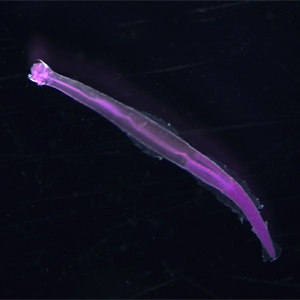Chaetognaths are one of the most abundant phyla of mesozooplankton, second in number only to copepods. The 132 species comprising the Chaetognaths phylum vary in size from 2 to 120 mm, with bodies that are generally transparent and bilaterally symmetrical. Due to their high abundance, chaetognaths play a significant role in transferring energy to higher trophic levels within marine food webs. While their role in global ecosystems is well understood, the spatial variation and environmental drivers of estuarine chaetognath populations is poorly understood.

In their new study titled "Diversity, seasonal abundance, and environmental drivers of chaetognath populations in North Inlet Estuary, South Carolina, USA", post-baccalaureate researcher Sarah Stone and her mentor Dr. Josh Stone identified and quantified Chaetognaths from zooplankton samples collected on a monthly basis in 2019 and 2020 from North Inlet Estuary in South Carolina. They found that Parasagitta tenuis was the most abundant species of the five identified, making up 33% of total abundance. Sarah and Josh also analyzed the egg presence of these chaetognaths to gauge reproductive cycles, and found that Chaetognath egg production was most significantly associated with dissolved oxygen and seasonal changes in temperature. Altogether, their findings indicate the continued abundance of chaetognath in a local estuary are dependent on abiotic factors that are strongly influenced by a changing climate.